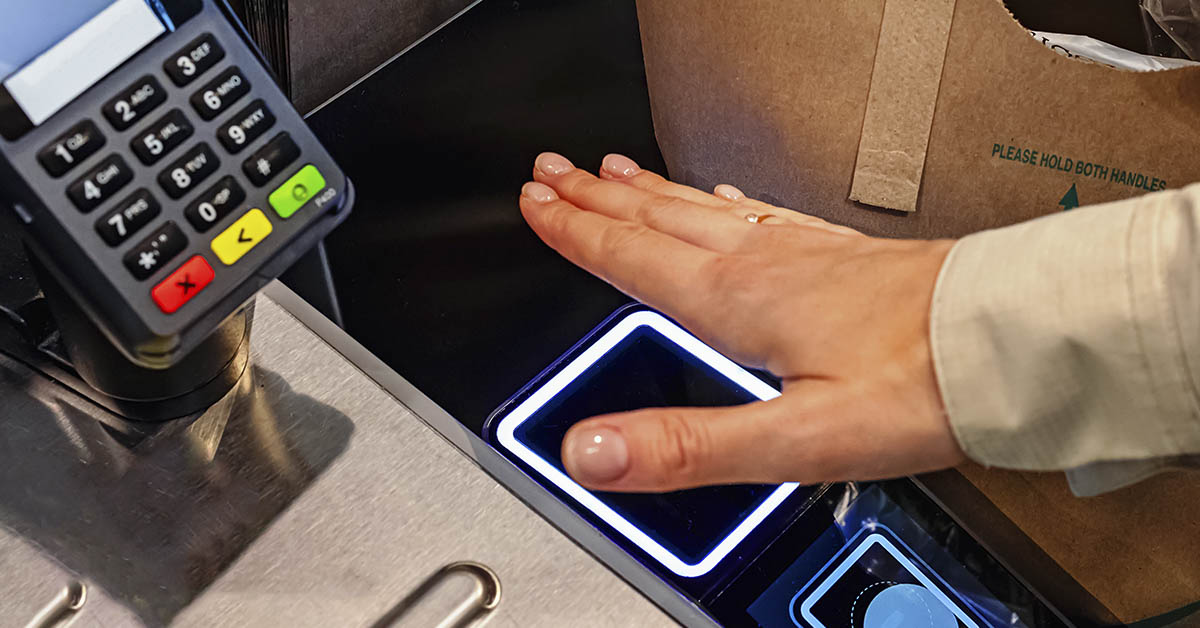Payment technology has progressed rapidly in recent years. Once upon a time, you needed cold hard cash to purchase groceries. Then, all you needed were plastic cards. Then all you needed was a smartphone. Now, all you need is the palm of your hand. Last year, Amazon launched palm-paying technology, called Amazon One, to over 65 Whole Foods stores across California. But this year, the consumer tech giant plans to implement Amazon One to all 500+ Whole Foods branches in the United States.
Palm-Payment System Coming to Whole Foods
Amazon One was originally pitched in 2020 when it appeared in Amazon Go stores. The concept was simple. Customers can hold their hand over the Amazon One checkout device to pay with the card associated with their Amazon account. In order to enroll in this payment system, shoppers only need their Amazon account, mobile number, and credit or debit card before scanning their palms at any store with this payment option available. Prime members who use Amazon One will have savings applied automatically. [1]
Today, this technology is also available at certain gyms, airports, Fresh and Go stores as well as the Amazon Style fashion store in Glendale, California, and at Coors Field where the staff uses it to check the age of alcohol-buying sports fans. This year, Panera Bread initiated this payment system at two locations in St. Louis and plans to extend it to 10 to 20 more locations in Seattle. Niren Chaudhary, the then-CEO of Panera, expects Amazon One to “spread pretty quickly.” He explained, “I just see this as a natural evolution of using biometric technology to drive convenience, loyalty identification, and payment.” The company uses the system to access MyPanera loyalty account information so staff could greet the customers by name and provide a personalized experience.
Whole Foods Market chief technology officer Leandro Balbinot praised Amazon One. “We are always looking for new ways to delight our customers and improve the shopping experience,” said Balbinot. “Since we’ve introduced Amazon One at Whole Foods Market stores over the past two years, we’ve seen that customers love the convenience it provides, and we’re excited to bring Amazon One to all of our customers across the U.S.” [2]
Is Amazon One Safe?
Amazon One works by creating palm signatures using the hands’ underlying vein structure to identify shoppers. The company claims that stores don’t keep these images. Instead, the palm becomes encrypted and sent to a server to match with other purchases in the future. “We intentionally architected the Amazon One service to store all highly sensitive biometric data off-device in a highly secure, isolated, and purpose-built cloud storage environment. Additionally, access controls are enforced and audited on both the data repository and the key management system. This ensures that, once collected, biometric data is transient and never persists on a device. Palm data that is provided to Amazon One is stored separately from other Amazon consumer data,” wrote the company. [3]
However, this raises the ongoing discussion about giving up personal data for the sake of convenience, which makes many concerned about their privacy. Although using biometric data like Face ID or fingerprints to access personal devices is common, some users are uncomfortable with the thought of Amazon possibly tracking them during their day-to-day errands.
Even U.S. senators spoke out against this new system. “In contrast with biometric systems like Apple’s Face ID and Touch ID or Samsung Pass, which store biometric information on a user’s device, Amazon One reportedly uploads biometric information to the cloud, raising unique security risks,” wrote Senators Bill Cassidy, Amy Klobuchar, and Jon Ossoff in an open letter to Amazon chief executive Andy Jassy. [4]
Privacy Risks
In 2021, Amazon partnered with ticketing company AXS to set up Amazon One at Denver, Colorado’s Red Rocks Amphitheater. However, this announcement was met with backlash from human rights groups, artists, and fans who wanted Red Rocks to ban biometric tools like palm scans and facial recognition. In an open letter, they expressed concerns about Amazon sharing personal data with government agencies. This system also makes their data vulnerable to hackers. Their worries are not unfounded. Amazon already stores voice data from Alexa. Plus, the company has sold biometric facial recognition systems to U.S. law enforcement.
“The use of palm-scanning is often standardized to allow for seamless integration across different vectors,” said Eduardo Azanza, CEO and Co-Founder at the digital verification company Veridas. “This ease of operation inherently raises the risk of compromised privacy and unauthorized data sharing due to interoperability and personal data extraction. This could lead to individuals’ data being used in unintended ways or by third-party services without the consent of the customer.” He added that there are growing conversations surrounding biometrics and their reliability when it comes to proper identification and how to protect users’ privacy. [5]
Keep Reading: The microchip implants that let you pay with your hand
Sources:
- Brooke DiPalma. “Amazon brings palm payment technology to all Whole Foods locations.” Yahoo News. July 20, 2023
- Andrew Paul. “Amazon’s palm-scanning payment tech will hit all Whole Foods stores this year.” Popular Science. July 25, 2023
- Sanjay Dash. “Amazon One palm payment technology is coming to all 500+ Whole Foods Market stores in the U.S.” Amazon. July 20, 2023
- Lauren Forristal “Amazon expands palm-scanning payment tech to 65 more Whole Foods locations.” Tech Crunch. August 10, 2022
- Paulina Okunytė. “Amazon pushes biometric payments, raising surveillance and identity theft fears.” Cyber News. July 25, 2023

